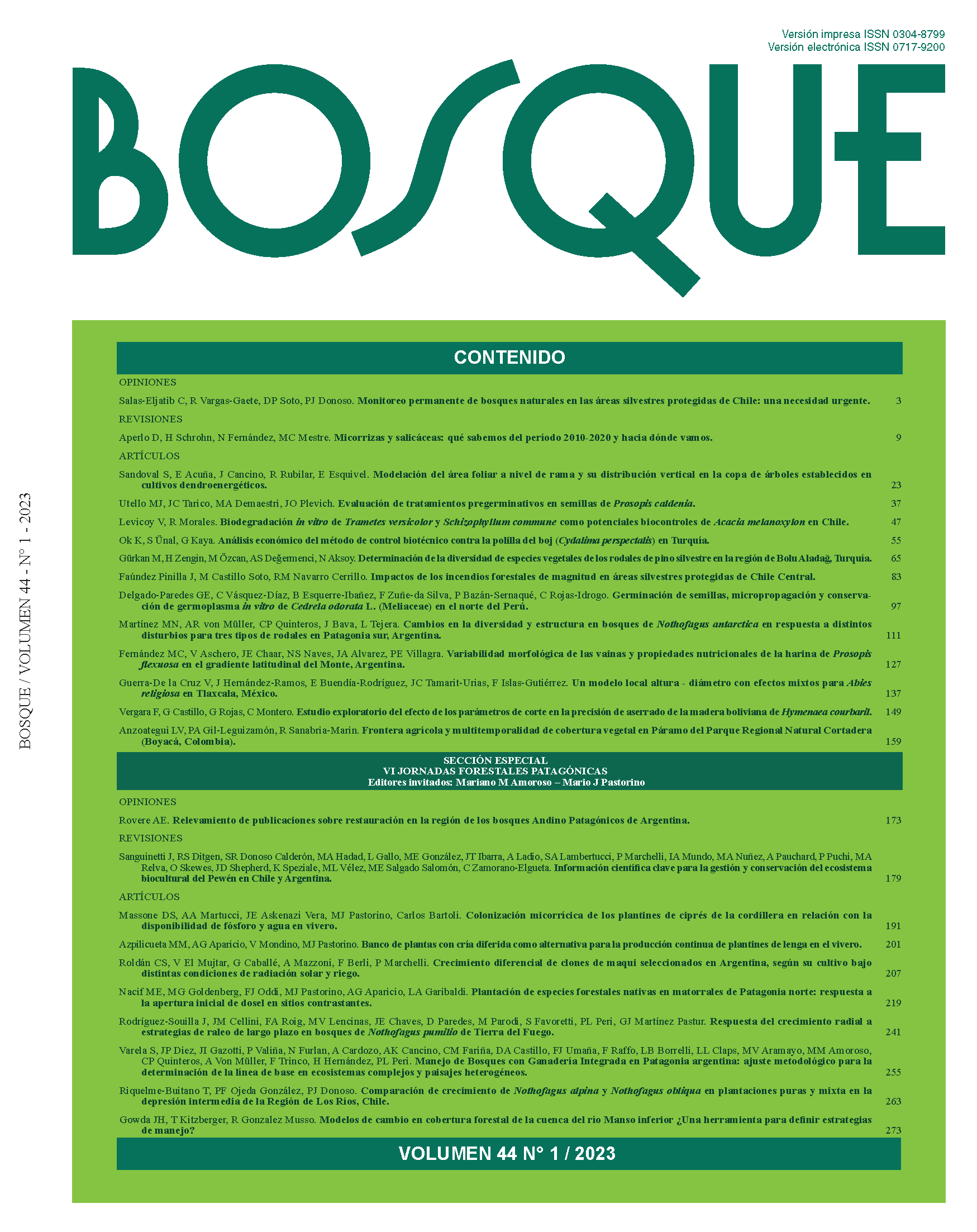Modelos de cambio en cobertura forestal de la cuenca del río Manso inferior ¿Una herramienta para definir estrategias de manejo?
Contenido principal del artículo
Resumen
Muchos bosques del norte de la Patagonia andina argentina se han expandido en los últimos 100 años, avanzando sobre áreas incendiadas. En este artículo estimamos las respuestas de largo plazo de los principales tipos forestales de bosque alto, Nothofagus pumilio (lenga), Nothofagus dombeyi (coihue) y Austrocedrus chilensis (ciprés de la cordillera, en adelante “ciprés”), a los cambios de uso de la tierra que ha experimentado la cuenca del río Manso Inferior, la mayor superficie con potencial de manejo forestal de la Provincia de Río Negro, Argentina, combinando mapas de principios de siglo XX con modelos de distribución potencial y el mapa más reciente de cobertura forestal de la región. Nuestros resultados indican que durante los últimos 100 años se duplicó la superficie boscosa de la cuenca del río Manso. Los bosques de lenga se expandieron sobre los matorrales xéricos del valle. Los bosques de coihue avanzaron mayormente sobre áreas incendiadas a principios del siglo XX, en tanto que los cipresales avanzaron tanto en matorrales como en áreas incendiadas. El análisis de cambio indica que el tipo forestal ciprés ha sido el de mayor aumento relativo en la cuenca. Concluimos que, ante los escenarios actuales de cambio climático el manejo de matorrales combinado con una estrategia de reconversión de áreas clave a bosques productivos de coihue y ciprés sería una política más adecuada que la actual, caracterizada por la inexistencia de manejo del bosque, tanto en áreas protegidas como en predios bajo la administración de la Provincia de Río Negro.

